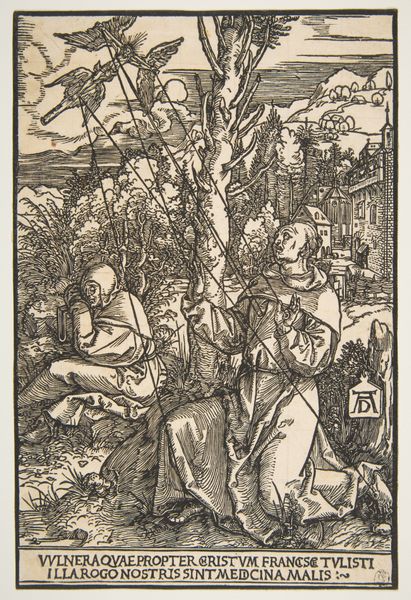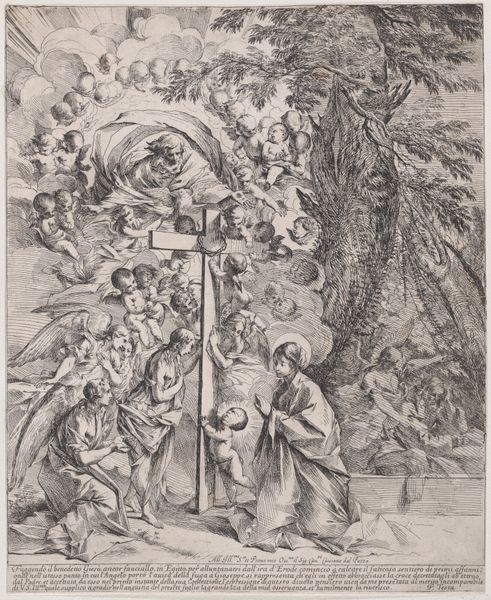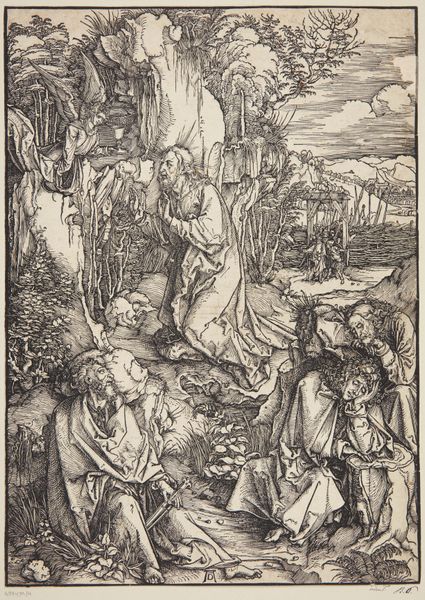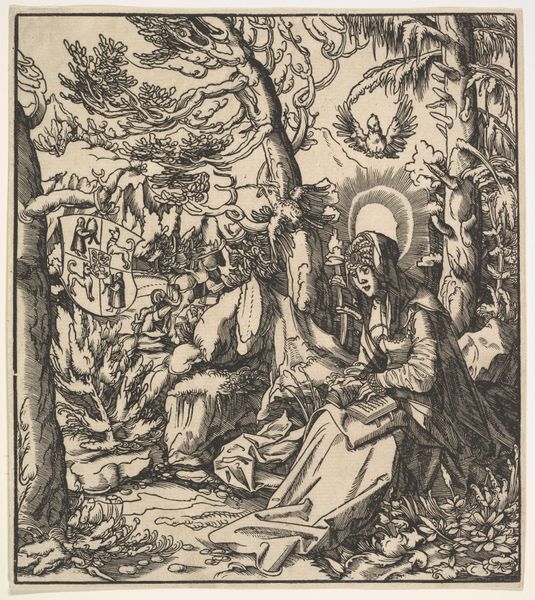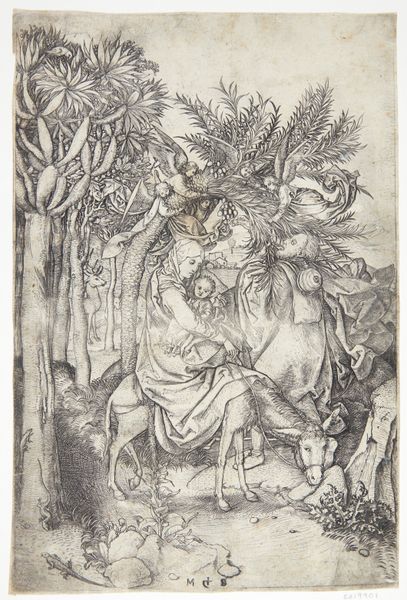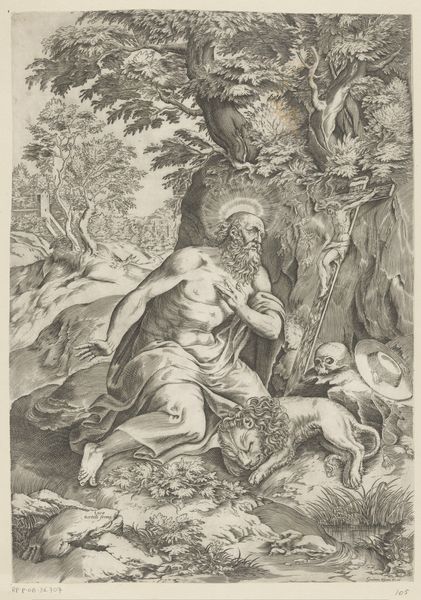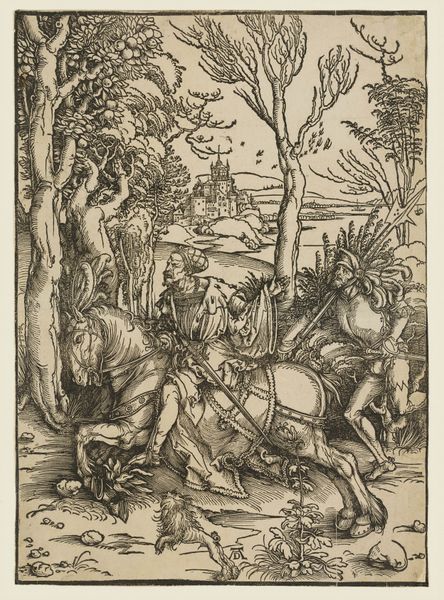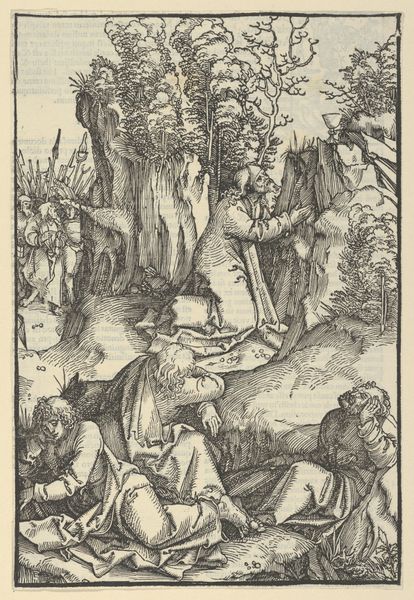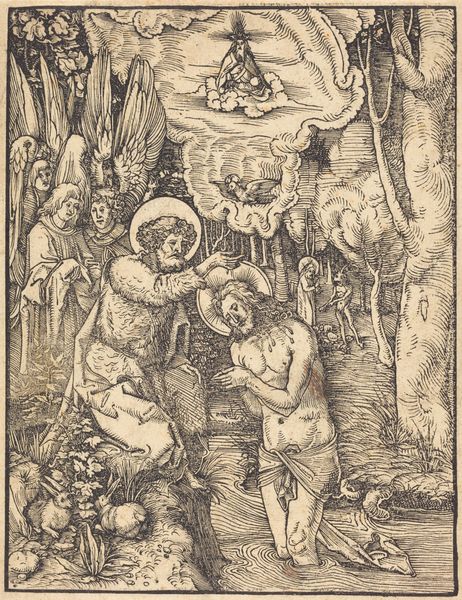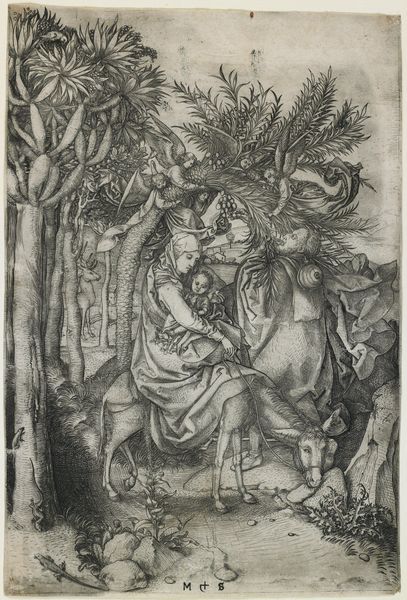
print, engraving
# print
#
landscape
#
figuration
#
line
#
history-painting
#
northern-renaissance
#
engraving
Dimensions: sheet: 22.7 x 16.5 cm (8 15/16 x 6 1/2 in.)
Copyright: National Gallery of Art: CC0 1.0
This is Master LCz's, "The Temptation of Christ," made sometime between 1425 and 1540, and it's an engraving, meaning the image is incised into a metal plate, inked, and then printed onto paper. Think about the labor involved in creating the incredibly fine lines that define the forms in this print. The engraver would have used a tool called a burin to carve the image into the metal, a process requiring immense skill and patience. The stark contrast between light and shadow, achieved through the density and direction of the engraved lines, gives the scene its dramatic intensity. The artist's mastery of line work allows for a rich depiction of textures, from the folds of Christ's robes to the grotesque details of the devil's figure. While the subject matter is religious, the print itself is a product of a burgeoning print market, driven by trade and commerce. This work reflects both the spiritual and the material conditions of its time, challenging any simple separation between art and craft.
Comments
No comments
Be the first to comment and join the conversation on the ultimate creative platform.

